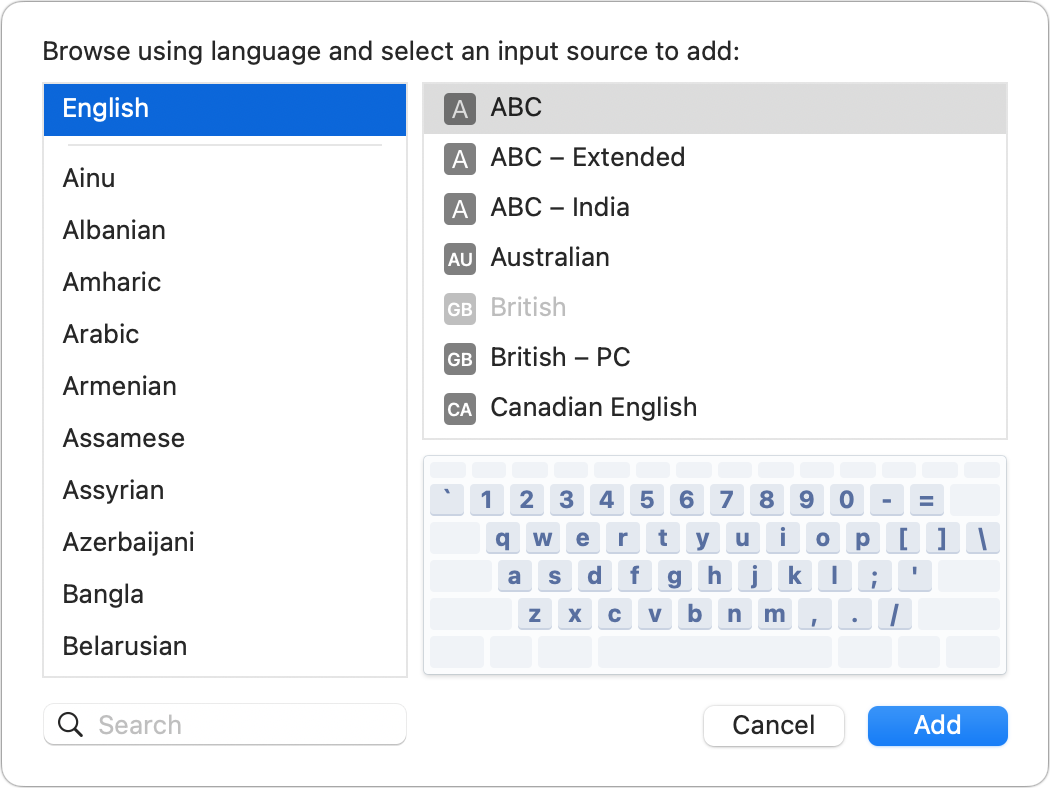For decades, Apple relied on a country flag as the primary indicator of which keyboard layout you’d selected in macOS for languages associated with a single country. In the last several versions of macOS, you select keyboards in System Preferences > Keyboards > Input Sources by clicking the + (plus) sign and browsing or searching for the layout you need.
The flags helped some of us recognize and confirm the layout we wanted when multiple choices for a language were available, such as a French layout used in France versus a French layout used in Canada. Many entries used letters or logograms as their symbol, such as Arabic, when no single country association made sense.
In macOS 12.4 Monterey, Apple took down the flags and put up the more boring—but perhaps more neutral and readable—two-letter international country codes in places where it previously used flags. Now all entries in Input Sources have letters, sometimes with an elaboration (such as VI above TX to indicate Vietnamese in Telex input format), instead of a mix.

(A useful tip: If you check “Show Input menu in menu bar” to display keyboard options in the Keyboard preference pane’s Input Sources view, you can then select Show Input Source Name from the Input menu to display details beyond the country code or abbreviation, like “GB British” for the UK English keyboard.)
While Apple didn’t disclose its motivations, it might be due to the increasingly fraught nature of displaying flags in a world with many active territorial disputes, border wars, and separatist movements, some of which come with competing flags, new flags, or flags that can provoke violence by their use.
Take the United Kingdom, which is more fully “the United Kingdom of Great Britain and Northern Ireland,” a single nation of four parts: England, Northern Ireland, Scotland, and Wales. The U.K. has a single flag for the country used internationally, but there are historic and modern flags for England, Scotland, and Wales included in Unicode and used in everyday life—yet Northern Ireland has none for intensely political reasons. You can see the problem.
More pragmatically, the group that provides unified character-representation standards for scripts (the letters that make up languages), symbols, Emoji, and more, the Unicode Consortium, has decided to stop approving new flag emoji. That means any future flag would have to be separately drawn and supported by Apple and not directly interchangeable with other platforms. (Windows, in fact, has never included drawings of flags in its Emoji sets at all.) It also lets the consortium tip-toe out of political discussions, leaving those to other international bodies.
However, if you prefer flags over letter codes, you can restore them with inexpensive utilities released by developers:
- Keyboard Switcheroo: For $1.99, this app creates a new input-selection menu that uses country flags, color-coded two-letter country codes, or an image you select.
- Colorful Input Menu Flags: This competing $0.99 app focuses on flags and lets you choose among variants for a language.
Ask Mac 911
We’ve compiled a list of the questions we get asked most frequently, along with answers and links to columns: read our super FAQ to see if your question is covered. If not, we’re always looking for new problems to solve! Email yours to mac911@macworld.com, including screen captures as appropriate and whether you want your full name used. Not every question will be answered; we don’t reply to email and cannot provide direct troubleshooting advice.




